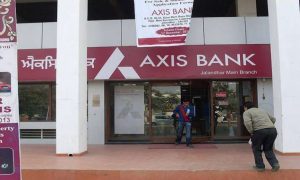A shift in digital payments was noted, with credit card transactions doubling over the past three years.
Unified Payments Interface (UPI) transactions experienced substantial growth, increasing by 57 per cent YoY in FY24. Within this segment, PhonePe and Google Pay dominated, holding a combined market share of 86 per cent, according to Boston Consulting Group (BCG) Banking sector roundup- FY24.
Read More: Supreme Court refuses to stay Patna HC order scrapping 65% caste-based quota in Bihar
A shift in digital payments was noted, with credit card transactions doubling over the past three years. In contrast, debit card transactions declined by 43 per cent year-on-year (YoY).
Over all the Indian banking system maintained a strong momentum in credit growth, which surged by 15 per cent, with a deposit growth of 13 per cent in FY24.
For the first time, the total net profit of the banking sector crossed ₹3 lakh crore in FY24, with all bank groups achieving a return on assets (ROA) greater than 1 per cent. This underscores the sector’s profitability, driven by high credit growth, healthy fee income growth, and low credit costs.
Read More: Colgate-Palmolive Receives Rs 248.74 Crore Tax Demand Notice
Notably, private banks’ profits jumped by 25 per cent year-on-year (YoY), while public sector banks (PSBs) saw a 34 per cent increase in net profit.
The report highlights an improvement in asset quality, with gross non-performing assets (GNPAs) reaching a decadal low of 2.8 per cent. This improvement is supported by a healthy provision coverage ratio (PCR), indicating that banks are well-prepared to manage asset-side risks. PSBs halved their GNPAs to 3.5 per cent, while private banks reported GNPAs below the industry average at 1.7 per cent.
India’s economic growth for FY24 surpassed all estimates, growing at 8.2 per cent YoY. The forecast for FY25 is expected to be between 6.2 per cent and 7 per cent YoY. The economic performance led S&P Global Ratings to upgrade India’s sovereign rating outlook from stable to positive, citing improved growth and better quality of government expenditure.
Read More: Pune Mega Block Today: Central Railway Cancels These Trains Till July 31, Check Full List Here
Despite the positive financial performance, the cost-to-income ratio (CIR) for the sector deteriorated by 206 basis points (bps) to 49.6 per cent. PSBs recorded a CIR of 52 per cent, up from 50 per cent in FY23, while private banks saw a slight increase to 47 per cent from 46 per cent in FY23.
Contrasting trends in provisioning were observed, with PSBs reporting a 37 per cent drop, while private banks saw increases, notably HDFC Bank (71 per cent) and Kotak Mahindra Bank (244 per cent).
The banking sector remains well-capitalized, with 33 out of 35 banks having a capital to risk-weighted assets ratio (CRAR) above 15 per cent, higher than the regulatory requirement of 9 per cent.
PSU banks have outperformed private banks and non-banking financial companies (NBFCs) in market valuation growth over the past three years.





































